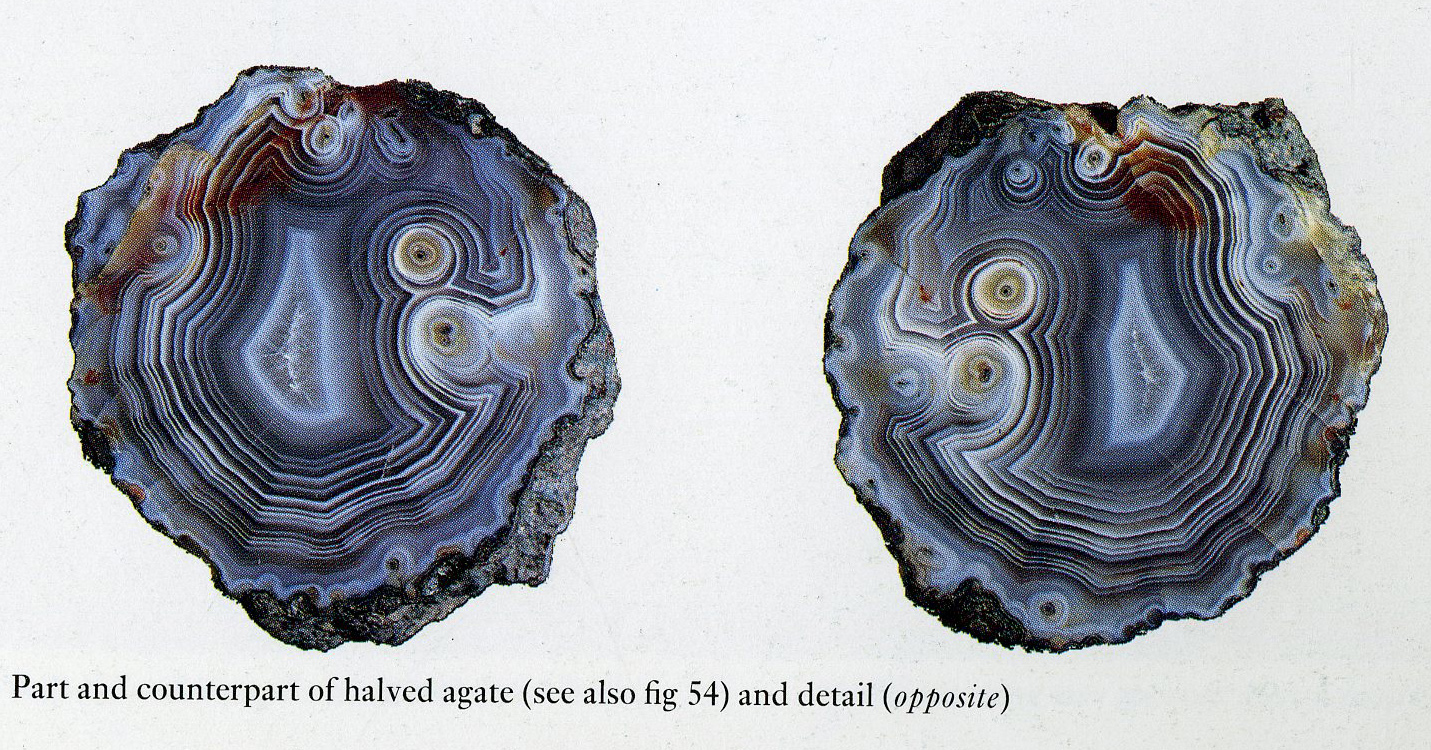Introduction
What Are Agates?
Agates are nodular masses, generally less than 15 cm in diameter, comprising one or more varieties of the common mineral quartz. Quartz consists essentially of the chemical elements silicon and oxygen, but exhibits many varieties of colour and form. Agates usually occupy the sites of former gas cavities (vesicles) in the volcanic rocks andesite and basalt, or more rarely may be found filling open cracks or fissures in these rocks. This kind of agate is called vein agate. Agates also occur in various other rocks, such as sediments.
Agates characteristically display a greenish skin. Their interiors are strikingly different from their exteriors, as can be seen if a piece of agate-bearing rock is broken open. Agates can also be found as loose stones, set free from volcanic lavas when these soften and crumble through natural weathering. The agates are unaffected by weathering and remain hard and resistant, although their green skins may be abraded and eventually lost on being tumbled about, for example, by the action of the sea. Abraded agates can look much like other pebbles on a beach and it is often difficult to distinguish them until one learns to recognize their characteristic features.
